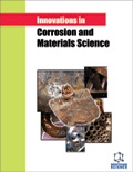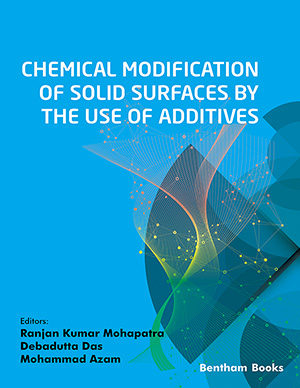Abstract
Background: Lithium tantalate (LiTaO3) thin film was synthesized and in situ coated on tantalum substrate via anodic oxidation.
Methods: The effects of temperature, voltage and time on composition, morphology and hardness of film were investigated by X-ray diffraction (XRD), scanning electron microscopy (SEM) and Vickers hardness, respectively. Results: Our results showed that surface hardness of all coated samples has been increased compared with that of pure tantalum. The value of hardness was found to gradually increase with temperature, voltage and reaction time of the coating process. Selected specimens, after coating, were immersed into 10 wt% NaOH solution at 50oC for 96h to explore their anti-corrosion performance. Immersing results indicated that LiTaO3 coated samples have a smaller mass loss and corrosion rate compared to those of pure Ta substrate. Pure tantalum sample and those coated by LiTaO3 thin film were further examined by electrochemical methods including open-circuit potential (OCP), potentiodynamic polarization curves and electrochemical impedance spectra (EIS). Conclusion: We have found that samples coated with LiTaO3 thin film exhibit higher potentials and lower corrosion current densities than those of pure tantalum substrate, according to the results and analysis of OCP curves and potentiodynamic polarization curves. Upon anodic oxidation, samples display higher polarization resistance with higher resistance to corrosion.Keywords: LiTaO3 thin film, anodic oxidation, anticorrosion, NaOH solution, tantalum substrate, molten LiNO3.
[1]
Y.X. Leng, T.Y. Chen, and P. Yang, "The biocompatibility of the tantalum and tantalum oxide films synthesized by pulse metal vacuum arc source deposition", Nucl. Instrum. Methods Phys. Res. Sect. B, vol. 242, pp. 30-32, 2006.
[2]
L.L. Liu, J. Xu, and X. Lu, "Electrochemical corrosion behavior of nanocrystalline β-Ta coating for biomedical applications", ACS Biomater. Sci. Eng., vol. 2, pp. 579-594, 2016.
[3]
H. Koivuluoto, G. Bolelli, and L. Lusvarghi, "Corrosion resistance of cold-sprayed Ta coatings in very aggressive conditions", Surf. Coat. Tech., vol. 205, pp. 1103-1107, 2010.
[4]
H.P. Yang, M.T. Tang, and B.H. Li, "Corrosion study on tantalum in anhydrous ethanol", Chin. J. Chem. Phys., vol. 27, pp. 491-496, 2014.
[5]
A.C. Hee, Y. Zhao, and S.S. Jamali, "Corrosion behaviour and microstructure of tantalum film on Ti6Al4V substrate by filtered cathodic vacuum arc deposition", Thin Solid Films, vol. 636, pp. 54-62, 2017.
[6]
D.B. Wei, X.H. Chen, and P.Z. Zhang, "Plasma surface tantalum alloying on titanium and its corrosion behavior in sulfuric acid and hydrochloric acid", Appl. Surf. Sci., vol. 441, pp. 448-457, 2018.
[7]
J. Xu, W. Hu, and Z.H. Xie, "Reactive-sputter-deposited β-Ta2O5, and TaON nanoceramic coatings on Ti-6Al-4V alloy against wear and corrosion damage", Surf. Coat. Tech., vol. 296, pp. 171-184, 2016.
[8]
B. Rahmati, A.A.D. Sarhan, and W.J. Basirun, "Ceramic tantalum oxide thin film coating to enhance the corrosion and wear characteristics of Ti-6Al-4V alloy", J. Alloys Compd., vol. 676, pp. 369-376, 2016.
[9]
A. Robin, "Corrosion behaviour of tantalum in sodium hydroxide solutions", J. Appl. Electrochem., vol. 33, pp. 37-42, 2003.
[10]
W.H. Yin, and H.P. Tang, Downstream processing technology for refractory metals. M., Chemical Industry Press: Beijing, 2015, pp. 30-31.
[11]
M.H. Tsai, and C.J. Ko, "In situ formation, surface characteristics, and interfacial adhesion of poly(imide siloxane)/tantalum ox-ide hybrid films", Surf. Coat. Tech., vol. 201, pp. 4367-4371, 2006.
[12]
A.H. Ramezani, A.H. Sari, and A. Shokouhy, "The effects of argon ion bombardment on the corrosion resistance of tantalum", Int. Nano Lett., vol. 7, pp. 1-7, 2017.
[13]
S. Baral, and J. Bhattarai, "The effect of tantalum addition on the corrosion behavior of W-xTa alloys in 1 M NaOH solution", J. Environ. Prot. (Irvine Calif.), vol. 10, pp. 495-501, 2013.
[14]
A. Robin, "Corrosion behaviour of Ta-10 wt-%W alloy in sodium hydroxide solutions", Br. Corros. J., vol. 38, pp. 211-217, 2013.
[15]
J. Wang, J. Gou, and W. Li, "Preparation of room temperature terahertz detector with lithium tantalate crystal and thin film", AIP Adv., vol. 4, pp. 97-105, 2014.
[16]
U. Vogel, T. Gemming, and J. Eckert, "Analysis of the thermal and temporal stability of Ta and Ti thin films onto SAW-substrate materials (LiNbO3 and LiTaO3) using AR-XPS", Surf. Interface Anal., vol. 48, pp. 570-574, 2016.
[17]
X.F. Yang, Z.B. Zhang, and H.X. Sun, "Composition, surface morphology, optical properties and Ti profile characteristics of Ti-diffused LiTaO3 strip waveguide", J. Alloys Compd., vol. 695, pp. 2519-2524, 2017.
[18]
Y.H. Li, F. Chen, and G.Y. Gao, "Ferroelectric, dielectric and leakage current properties of epitaxial (K,Na)NbO3-LiTaO3-CaZrO3, thin films", J. Electroceram., vol. 34, pp. 1-6, 2015.
[19]
S. Mohanty, and R.N.P. Choudhary, "Dielectric and electrical properties of BiFeO3-LiTaO3 systems", J. Electron. Mater., vol. 44, pp. 1-10, 2015.
[20]
V.S. Gorelik, N.V. Sidorov, and A.I. Vodchits, "Optical properties of lithium niobate and lithium tantalate crystals with impurities and defects", Phys. Wave Phenom., vol. 25, pp. 10-19, 2017.
[21]
J.A. Agostinelli, G.H. Braunstein, and T.N. Blanton, "Epitaxial LiTaO3 thin films by pulsed laser deposition", Appl. Phys. Lett., vol. 63, pp. 123-125, 1993.
[22]
M.C. Kao, M.S. Lee, and C.M. Wang, "Properties of LiTaO3 thin films derived by a Diol-Based Sol-Gel process", Jpn. J. Appl. Phys., vol. 41, pp. 2982-2986, 2002.
[23]
L. Tian, V. Gopalan, and L. Galambos, "Domain reversal in stoichiometric LiTaO3 prepared by vapor transport equilibration", Appl. Phys. Lett., vol. 85, pp. 4445-4447, 2004.
[24]
P. Combette, L. Nougaret, and B. Sorli, "Pyroelectric LiTaO3 thin films elaborated by RF magnetron sputtering on RuO2/SiNx", Ferroelectr., vol. 353, pp. 233-241, 2007.
[25]
M. Miura, T. Matsuda, and Y. Satoh, "Temperature compensated
LiTaO3/sapphire bonded SAW substrate with low loss and high
coupling factor suitable for US-PCS application", Ultrason. Symp, vol. 2, pp. 1322-1325, . 2004
[26]
O. Kerrec, D. Devilliers, and H. Groult, "Dielectric properties of anodic oxide films on tantalum", Electrochim. Acta, vol. 40, pp. 719-724, 1995.
[27]
E.D. Kolb, and R.A. Laudise, "The phase diagram LiOH-Ta2O5-H2O and the hydrothermal synthesis of LiTaO3 and LiNbO3", J. Cryst. Growth, vol. 33, pp. 145-149, 1976.
[28]
Y.S. Wu, Ed., Metallic corrosion research method.Beijing: , Metallurgical
industry press, 1993.
[29]
G. Khan, W.J. Basirun, S.N. Kazi, P. Ahmed, L. Magaji, S.M. Ahmed, G.M. Khan, M.A. Rehman, and A.B.B.M. Badry, "Electrochemical investigation on the corrosion inhibition of mild steel by Quinazoline Schiff base compounds in hydrochloric acid solution", J. Colloid Interface Sci., vol. 502, pp. 134-145, 2017.
[30]
Y.Z. Liu, Process for providing lithium tantalum oxide coated
tantalum articles with improved wear resistance US 4678546 A[P]., 1989, pp. 03-07.
[31]
M.J.J. Jak, C. Konstapel, and A.V. Kreuningen, "The influence of substrate defects on the growth rate of palladium nanoparticles on a TiO2 (110) surface", Surf. Sci., vol. 474, pp. 28-36, 2001.
Article Metrics
 17
17 3
3 1
1 1
1





